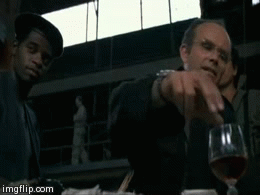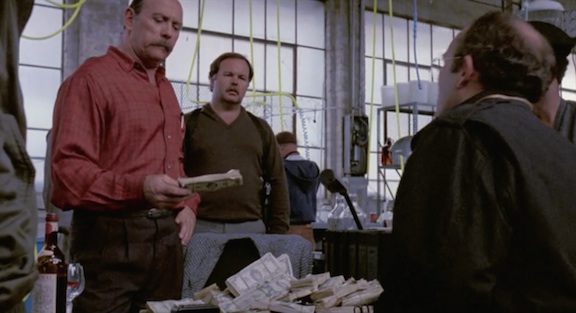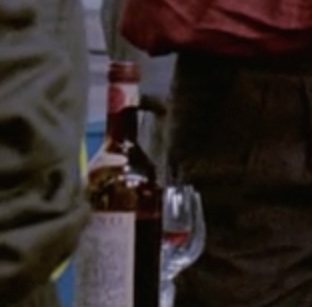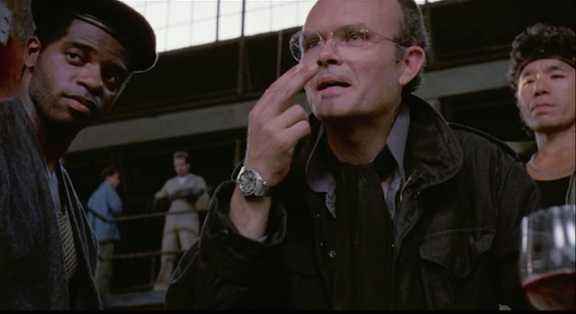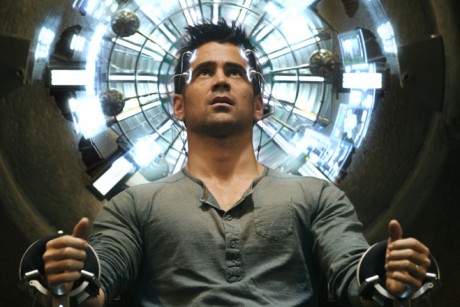Paul Verhoeven’s reputation as a visionary director took quite a hit after his 1995 Showgirls, and the release of Starship Troopers in 1997 only damaged it further. But twenty years have passed and the fickle tides of critical revilement have begun to turn. Adam Nayman’s new monograph on Showgirls, It Doesn’t Suck, argues, well, that Showgirls does not in fact suck. Meanwhile, at the Atlantic, Calum Marsh has been encouraging critics and fans to reexamine Verhoeven’s Starship Troopers, pointing out that, contrary to what many critics previously thought, the movie “is satire, a ruthlessly funny and keenly self-aware sendup of right-wing militarism.” I’m all for critical reassessments. I think they can add much to our understanding of a work of art. But these particular reassessments fail to account for what was actually wrong with Verhoeven’s later American filmography. They fail to see that just because a movie imitates a terrible movie perfectly doesn’t make it satire – it just makes it a self-aware terrible movie.
Calum Marsh is not the first person to argue that Starship Troopers is a great movie masquerading as a bad movie. I had a college roommate who thought much the same thing. It is so awful, it is good, he would say, quoting the final line of Sontag’s “Notes of Camp” out of context like a good college student. It is also clearly bad on purpose, my roommate would say, which makes it really ironic, and hilarious. Moreover, my roommate would contend, more quietly now, as the conversation in the space of two sentences had turned deadly serious, it has a message – it is making fun of people who champion war and the effects of fascism.
“Really?” I asked as another bomb blew orange bug blood over the lead space marine.
“Yeah,” he said, “fascism.”
And then one of the characters would say, “do you want to live forever?” and the space marines would charge the bugs with their guns and their bombs and my roommate would laugh and cheer at the irony and the “awesome” CG special effects.
I get what Marsh (and my old roommate) is saying. It’s satire. It’s making fun of people who act like this and the propaganda that creates these situations through hyperbole. In this interpretation, Verhoeven went about with the fastidiousness found in a Borgesian narrator to recreate and caricature the world of fascist propaganda. The clumsiness of the plot, the wooden acting and the facile characterization represent what happens in a fascist society. “War,” Verhoeven himself argued when asked about the movie, “makes fascists of us all.” Elsewhere, he claims he played “with fascism or fascist imagery to point out certain aspects of American society.” By choosing the worst possible (but fantastic looking) actors and then making them naked and have sex and then die at the hands of giant bugs, Verhoeven, it seems to many, has made a teenage fantasy; but it’s okay, because it’s making fun of those teenagers (and their adolescent-minded parents) while it entertains and makes money off of them.
Having been swept into similarly disastrous martial project in real life, I am enormously sympathetic to Verhoeven’s critique of American society. What I find off-putting though is the way Verhoeven went about accomplishing this critique. I have no problem with irony if irony is understood to be – as Richard Rorty claimed – the constant search for more useful metaphors (rather than the search for things as they actually are). Likewise, I have no problem with using irony to effect satire. I do have a problem with people who fall back on irony in lieu of criticism and to escape criticism. Verhoeven and his fellow directors only play at the pretense of irony, an irony that wants to be ironic when it works in their favor to be ironic and obnoxiously moralistic – and decisively reductionist – when it wants to be so. The advantage of this peculiar variation is its utter abnegation of ownership and responsibility – one can enjoy (and market) horrible and exploitive experiences while simultaneously condemning them, a curious rhetorical trick that manages to be both sententious and prurient all at once.
If – in conversation with my roommate – I accused Starship Troopers of being almost nostalgic toward the idea of “a great war” and the propaganda surrounding fascism. He would say, no, the movie is a joke; it’s making fun of this propaganda. But if I accused him of treating it as a joke, he would say, no, it’s a serious commentary on fascism. This sounds a lot like camp, not satire, where the line between that being mocked and that doing the mocking is purposely blurred (check out Oscar Wilde for examples). But the problem with movies like Starship Troopers, which attempt to treat war and fascist ideologies similarly, is the fact that fascism is already a variety of camp. The fascist has, as Walter Benjamin famously pointed out, aestheticized politics. Fascist aesthetics are already achieved through ironic choice – in the idea you can create a new morality and new type of people through a carefully cultivated, exaggerated and self-aware aesthetic of violence and manhood. It is not simply reactionary, but reactionary modernism, part of the same aesthetic world of the surrealists and the “degenerates” they despised. Thus, when a director attempts to mock it through hyperbole, the director reproduces not only the image of fascism but its substance.
You could argue that this is Verhoeven’s point, I suppose, and this is why he did this, to teach us how fascism works by letting the audience stick their hand in the proverbial fire. Yet, I would argue, his source material, Robert A. Heinlein’s Starship Troopers, is already fascist (in so far as it celebrates a cult and art of virility and war as an answer to social degeneracy), as opposed to faux-fascist, or camp-fascist, and does not need to be imitated through camp. If this is the joke, and the lesson, the book itself is sufficient. He could have used the 100 million he spent on CG effects toward making a movie that really tried to grapple with the dizzying refractions of aestheticized violence rather than imitating it and calling this laziness satire. And this brings me to another problem with the film: if Verhoeven’s project was indeed a straightforward satire, it lacks one important precondition of satire – namely, it isn’t in fact funny. Swift’s “Modest Proposal” is morally horrible and hilarious. Starship Troopers is just horrible, filled with hackneyed pop-cultural references to Vietnam movies as if written by a bunch of teenagers quoting Full Metal Jacket in funny voices. This is not satire, or even amusing, just sophomoric and stupid. At least, more often than not, the pulp violence of Tarantino – which also touches on the intimate and problematic connection between violence and representation – redeems itself by being genuinely clever. I can see parts where Verhoeven (or the screenwriter, Edward Neumeier) tries to be clever, but trying and being clever are two very different things.
In an article on Adam Nayman’s Showgirl’s revisionism, Noah Berlatsky identifies a “long and hypocritical tradition” where “earnest commenters enjoy the degradation of sex workers, and enjoy decrying that degradation, and decry the enjoyment of that degradation—all at the same time.” He suggests Showgirls – if truly a statement about sex workers in America – falls firmly within this prurient, confused and highly sententious tradition. I see no reason why Starship Troopers cannot be considered similarly; it is as a movie like say, Stone’s Natural Born Killers, where earnest commenters enjoy the degradation of violence, and enjoy decrying that degradation, and decry the enjoyment of that degradation. This has the appeal of looking very sophisticated, of having two opposing thoughts in the mind at once, while being, in practice, not only sophomoric and pornographic, but a travesty of self-criticism that strategically insulates itself from criticism.
After nearly twenty years, Verhoeven’s Starship Troopers does not look so original, just one more in a long line of alien invasion movies. It even has sequels, TV shows and video games, all hyperbolic replications like the movie that inspired them. The art, the symbol of war and alien invasion and the purging vision of apocalyptic violence still very much define our politics and culture. This is not Verhoeven’s fault of course, but Starship Troopers in no way contributes to the conversation substantively. At the end of his Atlantic article, Marsh argues that if you get what “was really going on. If you’re open and attuned to it – if you’re prepared for the rigor and intensity of Verhoeven’s approach – you’ll get the joke Starship Troopers is telling. And you’ll laugh.” I can personally attest in the real wars fought since his movie, soldiers honored one of their favorite movies by asking each other, “you going to live forever?” as they charged down hillsides and took pictures of themselves in the streets of Baghdad, Mosul and Kabul. They were being ironic of course, and this made them laugh because it was “self-aware.” Too bad this brand of self-critique looked a lot like fascistic self-indulgence to those not in on the joke.
Read more by Michael Carson at http://wrathbearingtree.wordpress.com/



